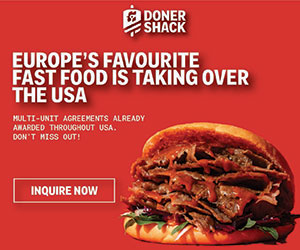Think Segment and Act Personal - Because You Can!

So, you want to target U.S. professionals with advanced degrees making more than $400,000 per year with two children of high school age? Your neighbor may qualify. So does Barack Obama. Same segment? Yes. Responds to and requires the same offers? Probably not.
Across the pond, your counterpart wants to reach wealthy Britons older than 65 who own multiple homes - Prince Charles and Jimmy Page. Same segment? Definitely. Responds to and requires the same offers? I'm guessing not.
Every department across the organization - loyalty, digital, mobile, marketing, merchandising, web, advertising - is working toward the same goal: maintain and grow share of wallet across customer groups.
At the beginning of a campaign, the language spoken across departments must be the same because content, special offers, coupons, personalized pricing, advertising, and flyers need to be tailored to reach the maximum number of segments with a minimum investment.
At the end of the campaign, the same language needs to hold. Results need to be reported by segment to demonstrate a campaign's critical mass. Individually, we don't care that Mr. Obama, once he has become a private citizen again, increased his spending by $2 or that Prince Charles' estate manager bought six packages of toilet paper for the country house instead of the usual three. What we want to see is that on this campaign, sales increased by 10%, defection fell by 3%, and basket size increased by 8% for the segment overall.
The workaround is that the segments get smaller and smaller and smaller - but the incremental gain is often offset by the expense of the creation of more and more segmented materials.
One-to-one marketing technologies must strike a balance between delivering individual, personalized customer communications that will make a difference in reaching every member of a specific segment, while being able to communicate the overall results of a campaign by segment.
When we say, "Think segment, but act personal," we mean optimizing your customers' separate experiences using research science and data-driven machine learning to combine the segmented material into individual offers that give each customer exactly what they need. To achieve this:
- Focus your personalized communications based on marketing objectives, including sales, budget, loyalty, and margin per customer across the channels of choice that influence them the most.
- Segment analysis, with a focus on personalization, increases ROI by targeting marketing dollars toward shoppers with the greatest impact on the bottom line, optimizing every dollar invested and future investments as well.
- Identify which shoppers and behaviors among various products and categories will drive the right results for you so your one-to-one, data-driven personalized shopper communications become standard operating procedure.
Doing these things will simplify and streamline the previously complicated initiative of one-to-one personalized shopper communications, scalable across millions of individual customers, targeting from thousands of potential offers, and through all communication channels and touchpoints - within a single reference framework.
Chen Katz is vice president of sales at Sagarmatha, which provides mass market retailers with the solutions they need to offer true one-to-one marketing to individual customers. Contact him at [email protected] or 646-934-6149.
Share this Feature
Recommended Reading:
| ADVERTISE | SPONSORED CONTENT |
FRANCHISE TOPICS
- Multi-Unit Franchising
- Get Started in Franchising
- Franchise Growth
- Franchise Operations
- Open New Units
- Franchise Leadership
- Franchise Marketing
- Technology
- Franchise Law
- Franchise Awards
- Franchise Rankings
- Franchise Trends
- Franchise Development
- Featured Franchise Stories
| ADVERTISE | SPONSORED CONTENT |








 The franchise listed above are not related to or endorsed by Franchise Update or Franchise Update Media Group. We are not engaged in, supporting, or endorsing any specific franchise, business opportunity, company or individual. No statement in this site is to be construed as a recommendation. We encourage prospective franchise buyers to perform extensive due diligence when considering a franchise opportunity.
The franchise listed above are not related to or endorsed by Franchise Update or Franchise Update Media Group. We are not engaged in, supporting, or endorsing any specific franchise, business opportunity, company or individual. No statement in this site is to be construed as a recommendation. We encourage prospective franchise buyers to perform extensive due diligence when considering a franchise opportunity.